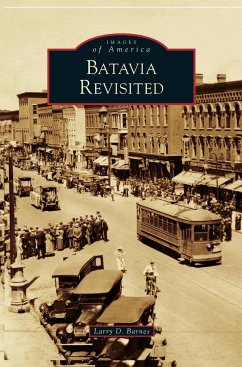Batavia's origins can be traced back to 1801 when Joseph Ellicott, surveyor and land agent for the Holland Land Company, laid out the town's principal thoroughfares. As Batavia grew, it became incorporated as a village in 1823 and as a city in 1915. Over the years, the face of the community has undergone many changes. Mansions were built along Main Street and then largely disappeared. A number of major factories sprang up but later failed or the businesses moved on. The retail center moved out of the city's downtown and into the surrounding town of Batavia. Urban renewal dramatically altered the core of the city, as large areas were leveled and then rebuilt or turned into parking lots. Railroad tracks that ran through the center of the community were moved to its periphery. Traffic patterns changed as new bridges were built across Tonawanda Creek. This book documents these and other changes that occurred during the last 200 years.








